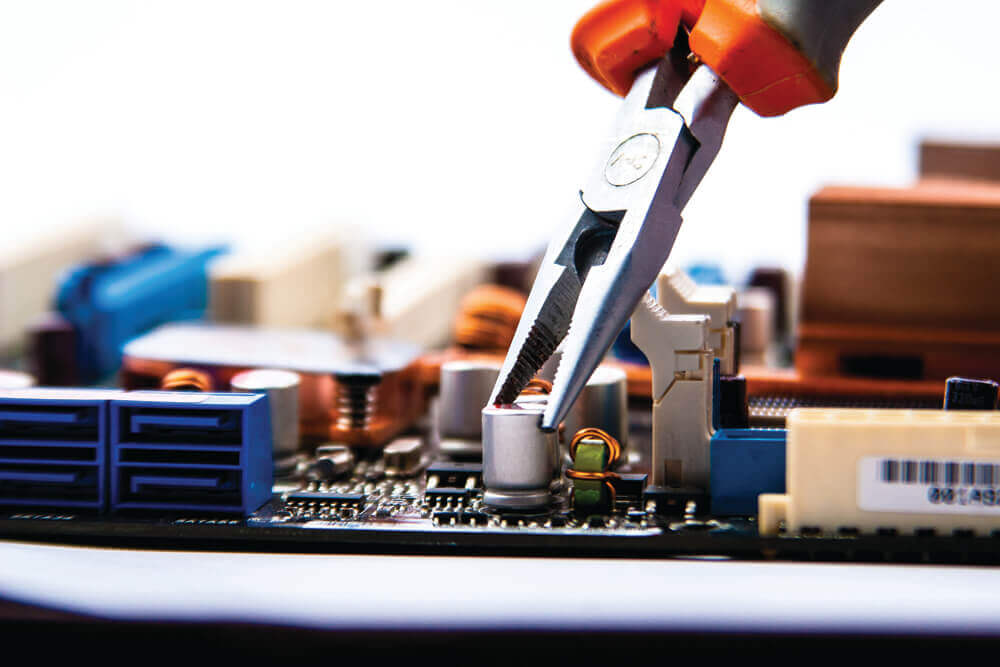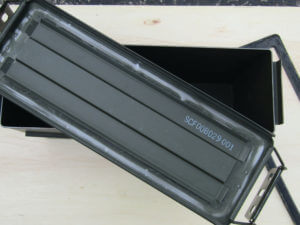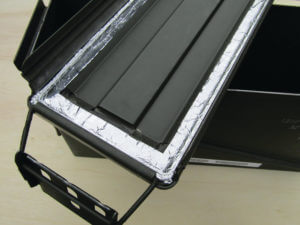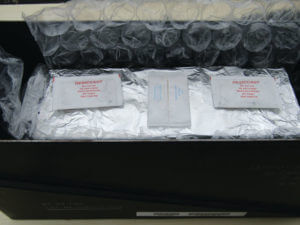Our sun occasionally spews out enormous clouds of hot plasma called “coronal mass ejections” (CME). Most of them are blown harmlessly out into space. However, when one hits Earth directly, the immense energy in the CME strongly affects our planet’s geomagnetic field, causing it to distort violently and resulting in rapid changes in the magnetic flux lines.
Nuclear weapons, specifically designed to convert atomic energy into gamma radiation, are in the arsenals of several nations, and the possibility of a rogue government developing such a weapon increases every day. The threat is not in the blast, itself; it comes from the release of energy interacting with the molecules and atoms in the air.
At the moment of detonation, the radiation will ionize these particles, placing them in an extremely high electric state, immediately creating a strong electric field. In under a second, these particles will begin to lose their charge, and the electric field will reverse—collapsing back on itself just as quickly as it began.
Either of these rapidly changing magnetic or electric fields will create electromagnetic waves that propagate outward at the speed of light—that is, an EMP.
THE EFFECTS OF AN EMP
The EMP carries no mass, comes without a shockwave and is invisible, but its effects on electrical systems and devices can be disastrous. An electrical conductor such as a high-tension power line, when placed in a fluctuating electromagnetic field, will produce a current (through a phenomenon known as “induction”) that will be carried along the length of the conductor.
In the case of our power grid, this current might be many times what the lines usually carry, and when this surge of power reaches anything connected to the grid, it can have devastating results. The entire electrical infrastructure, including every transmission line, substation and transformer, is susceptible to a power surge; much of it will be damaged beyond repair. With little or no warning, the lights could go out—indefinitely.

1. Galvanized steel trash can
2. Surplus steel ammunition can
3. Conductive aluminum tape
4. Aluminum foil
5. Desiccant packs
6. Nonconductive plastic wrapping
7. Paper boxes
PROTECTING YOUR GEAR
Protecting electronic devices from damage requires that they be disconnected from the electric grid. Just as lightning (a localized form of an EMP) can enter a home through the electrical wiring, rendering appliances such as the refrigerator and television useless, the surge caused by the EMP and carried to the home by the power lines will find its way to every electrical outlet. In addition, they must also be electrostatically shielded from the pulse, itself.
If an electronic device is completely enclosed in a conductive container, the electromagnetic pulse is blocked by the surface of the container. Just as the shielding in a microwave oven keeps microwave energy (which is electromagnetic energy) confined to the inside, a completely enclosed, electrically conductive metal box will keep electromagnetic energy out.

Most amateur radio equipment is designed to function in high electromagnetic fields (either because they generate those fields or were designed to work in conjunction with those that do) and incorporate substantial shielding in their designs. This might make them fairly immune to the effects of an EMP, but any conductors that lead in or out of the equipment might penetrate the shield.
Antennas will certainly pass some energy through the coax directly into any devices to which they are connected. Additional shielding is recommended, and disconnecting all power leads and feed lines is required to protect the equipment from a strong EMP.
Shielding is accomplished by surrounding the item in an electrically conductive enclosure, creating an electrostatic barrier commonly called a “Faraday cage.” This cage can be as simple as placing the item inside a large metal can, such as a galvanized steel trash can, and ensuring the lid makes good electrical contact all the way around.
Surplus steel ammunition cans are good candidates for making an electrostatic shield. Many sizes of ammunition cans can be found at surplus stores or gun shows and are usually fairly inexpensive.
However, an ammo can must be modified slightly to convert it into a suitable electrostatic shield: The sealing rubber gasket must be removed from the lid and then modified, and the paint underneath it must be removed by scraping or sanding.
Use conductive aluminum tape (the shiny metallic type used for sealing ventilation ducts) and fold it around the rubber gasket (sticky side to the gasket, itself), and then reinstall the now conductive seal into the lid.
Finally, scrape or sand the paint from the mating surface of the can and reinstall the lid. Close the lid a couple of times and check for an indentation in the tape-covered gasket to verify a continuous seal.
When placing items inside the container, many people wrap the item with layers of aluminum foil followed by a layer of nonconductive material (such as plastic) to further protect and insulate it from the inside of the can. Some take the extra step of connecting a ground wire to the outside of the container. If nothing else, these added precautions will provide extra peace of mind.
If grounding the container, connect the ground wire to a separate dedicated earth ground—do not connect it to the home’s electrical ground or to the plumbing, because these could feed a surge directly to the container. If the ground wire is more than a couple of feet long, it might be best not to use a ground at all. In addition, remember to place a desiccant pack inside the container to protect against moisture.
Items too large to be placed in a container can be left in their original packaging, but wrap multiple layers of aluminum foil around the outside. The foil edges should overlap to ensure electrical continuity. Finally, a layer of plastic (plastic wrap, heavy-duty trash can liner or similar) can be placed over the foil to protect it from tearing.
Any electronic items that are out in the open will likely be exposed and vulnerable to a possible EMP. Keeping your station equipment off the power grid will eliminate half the threat, and most radios should prove to be quite resilient to the pulse, itself. If you also follow the common practice of disconnecting antenna feed lines when the radio is off and unattended, you will prevent any energy from entering along that route.

FINAL NOTE
Batteries should show no negative effects from an EMP, and many solar panels have taken direct hits from lightning and continued working just fine. Nevertheless, it doesn’t hurt to have spare panels on hand that are protected during such an event in case there is damage to currently installed panels.
Even if the power grid fails, there will still be plenty of power available for prepared ham radio operators.
In the event of a HEMP, you probably won’t be able to get in touch with your insurance agent, so be sure to have spare equipment stored in a protected manner to help you get back on the air and make contact with the outside world.
Editors Note: A version of this article first appeared in the March 2016 print issue of American Survival Guide.





